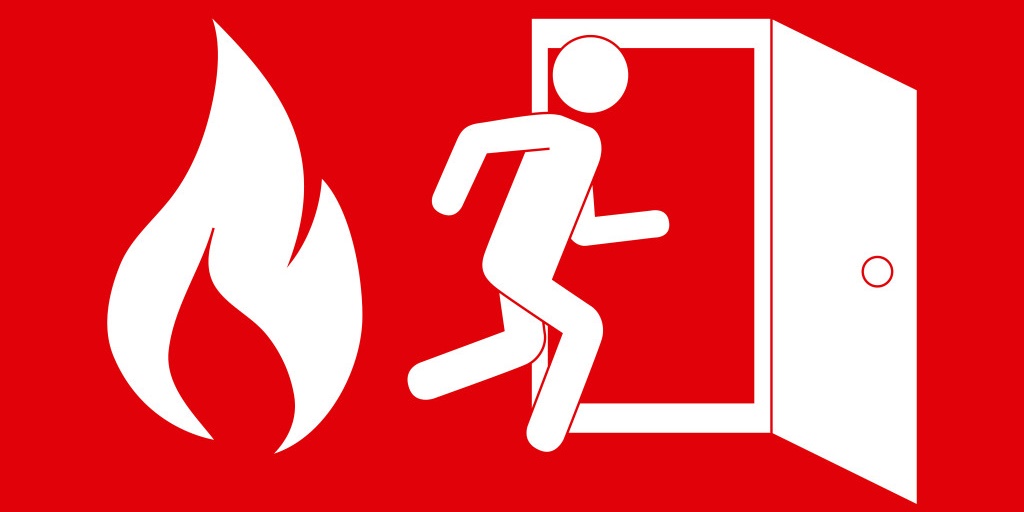In today’s modern world, having an incredible product is often not enough.
In our information-driven age, consumers spend far more time online searching for, researching and buying the products or service that they want. An optimised website has become a must. But you probably knew that, and that’s why you have a website already set up.
- But why is your website traffic not leading to increased sales?
- Why are potential clients often not even getting past your landing page?
These questions, amongst many others, can be answered by spending some time understanding and then optimising the bounce and exit rates of your website.
What is an Exit Rate?
The percentage of people who access your website, view parts of it and then leave, is known as the exit rate. Each specific page will have it’s exit rate statistics, as well as the last page that visitors viewed before they left your website. This helps to determine if a specific page might be causing people to leave.
What is a Bounce Rate?
The number of people visiting your website, and leaving after only accessing a single page for a few seconds, is referred to as the bounce rate. Again, each page has bounce rate statistics. The most important pages in this regard are any landing pages (where ad traffic arrives), pages that are intended to generate interaction or conversation and pages that most visitors see when they visit your website. These normally generate the highest traffic volumes.

If your pages generate a high bounce rate, visitors accessing your website are not engaging with it.
A number of factors could cause this, including the wrong kind of people visiting your page, or even poor quality information on your website. There are many ways in which leaving a website registers as a bounce. These include a user either clicking the back button on their browser, typing a new URL into the address bar, closing a browser tab, following an external link or the browser session timing out.
Finding your Bounce Rate
To determine the bounce rate of various pages on your website, use Google Analytics. Not only will it give you bounce rate statistics for your website as a whole, but for each individual page.
These statistics can be found by entering Google Analytics and accessing Content > Site Content > Pages.
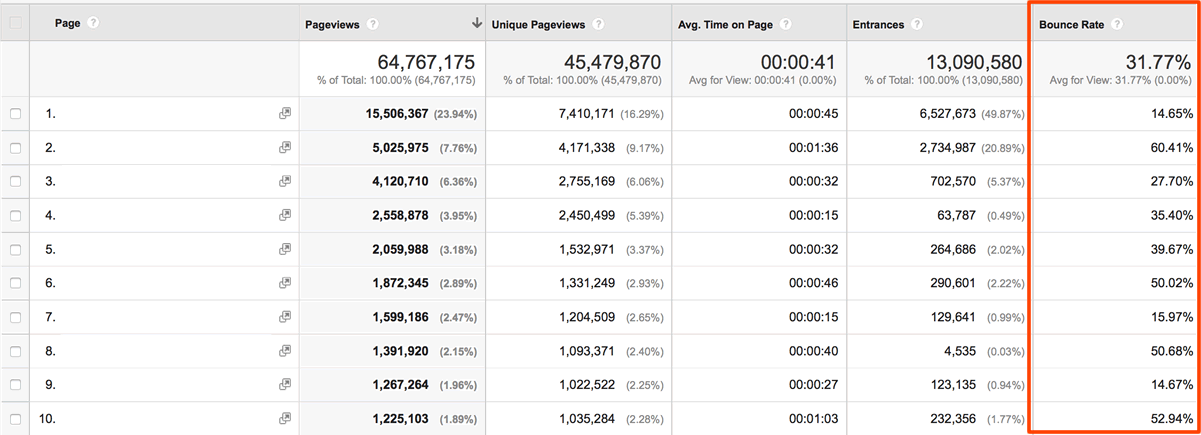
Along with other interesting information about your website, the bounce rates for each page can be found in the sixth column.
Finding Your Exit Pages
It is imperative that you find those pages that are causing visitors to leave your site. These exit pages often have many of the problems already discussed above. If they are not modified or removed, visitors will continue to move away from the website and search elsewhere.
The easiest way to find your exit pages is again by using Google Analytics. This information is found under Content > Site Content > Exit Pages.

Common Reasons Visitors Bounce and Leave your Webite
If your website is suffering from a high bounce rate, you will need to determine why visitors are leaving. Many factors could influence this, but most are relatively easy to fix. See the following common reasons that visitors bounce.
#1 Your website suffers from poor visual design

One of the most obvious parts of your online presence that pushes people away is the visual design of your website. In an effort to cut costs, many small businesses and sometimes even larger companies, produce their websites in-house or use design companies with little experience in effective web design. If you want visitors to make use of your website, it needs to look the part.
There are some basic rules that should be adhered to when it comes to a visually effective website. It should incorporate the following:
- simplicity
- conciseness
- easy navigation
- proper use of headers
- proper use of white space to keep a visual appeal
- use of primary colors accented by other colors
- providing links to other important locations on the site
- incorporating links to allow visitors to share the page as well as links to your social media platforms.
#2 Your website is not visitor friendly
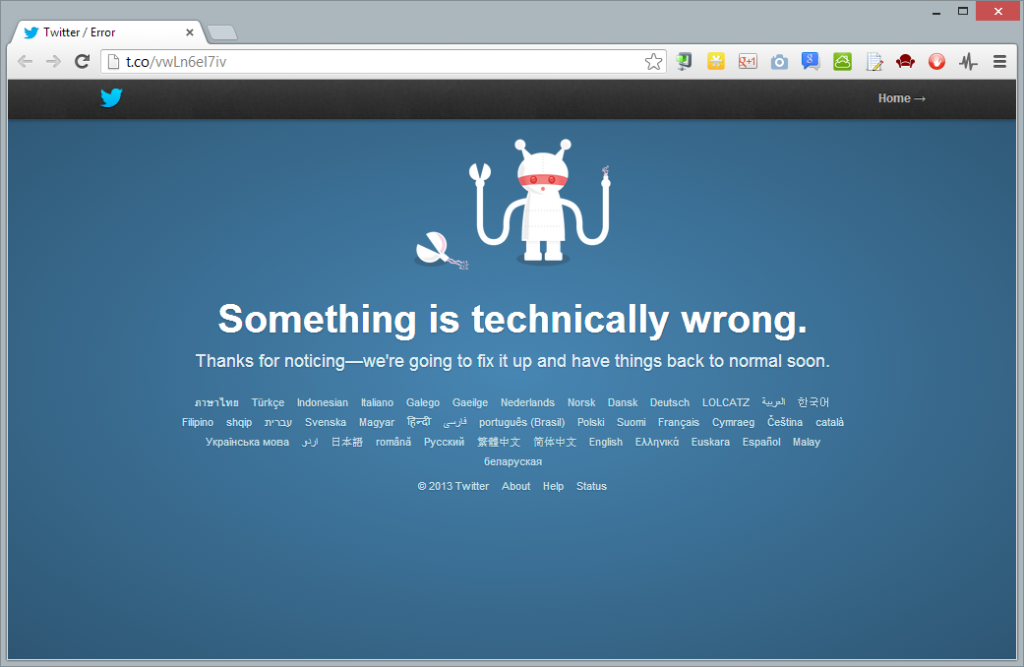 Next up is the issue of a website being unfriendly to visitors. More often than not, people will leave a website that does not seem visitor friendly. Visually, you might have the perfect website, but many other factors could cause visitors to go elsewhere, thus upping your bounce rate.
Next up is the issue of a website being unfriendly to visitors. More often than not, people will leave a website that does not seem visitor friendly. Visually, you might have the perfect website, but many other factors could cause visitors to go elsewhere, thus upping your bounce rate.
One of the main factors to address is browser compatibility. Optimize your website to work with all major browser types. Also, ensure that all links lead where intended when clicked. Have people test the website and provide feedback. This important step can help to find any small problems before visitors do!
#3 Your website does not meet visitor expectations

Your website might not meet the expectation that visitors anticipate from it. You will need to determine how visitors found your website. The most obvious ways are through using a search engine or by following a link from an advert or other website.
In these scenarios, visitors will already have an idea in mind as to what your website will offer them. If their expectations are not met, they will leave and look to fulfill them elsewhere. Once again, Google Analytics has many tools that will help to answer these important questions. These tools are found under Traffic Sources and include All Traffic, Referrals and Search Engine reports.
User surveys are another way to understand exactly what visitors are looking for when they visit your site. Do not force these surveys on visitors, but having a conveniently-placed link can lead to some important feedback reflecting visitor expectations.
#4 Your website attracts the wrong target audience

Your website might be attracting the wrong target audience completely. Although your website is an important part of this whole process, the people accessing and viewing it are of far more value. If the wrong people are accessing your page, they will not find what they are looking for and leave, thus pushing bounce rates higher.
But why exactly would the wrong audience be coming to your website? Most of the time, people will be drawn by ads that you might place in other online portals such as social media. Make sure that these ads are not misleading or filled with false promises that, while attracting visitors to your website, ultimately attract the wrong kind of audience. Make sure that your keywords and ads are in line with what visitors can expect to find on your website.
#5 Your website has no call to action
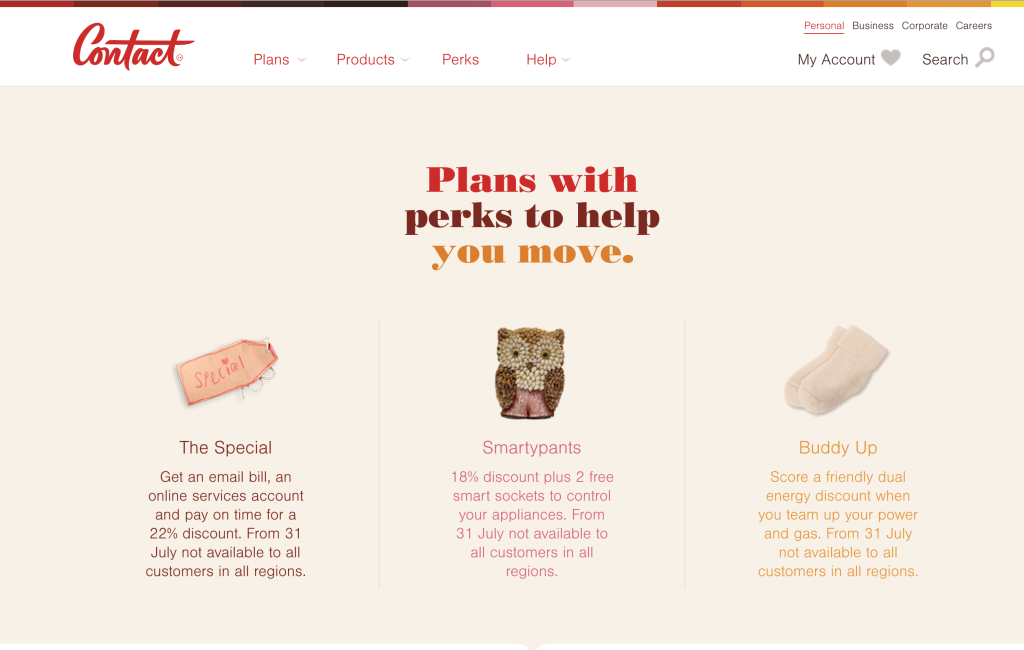
Often linked to a poorly designed website, having no call to action leaves visitors lost and not knowing what to do next.
You might want a visitor to sign up to your blog, like your Facebook page, follow you on twitter or even buy your product.
If they are unable to easily find the links to do this, your page becomes meaningless, not only to your company, but to the visitor as well. They will move on very quickly and bounce rates will increase.
Well-designed websites will have several calls to the same action through which visitors are easily guided. Often, it is best to place your call to actions right on your landing page. Consider a search feature for your website. Use keywords found in your online adverts and match these to your call to action.
#6 Your website has too many calls to action
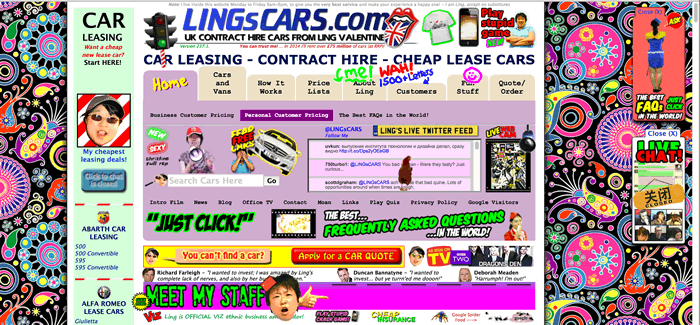 It is also possible to have too many calls to action on your website. This results in confusion for visitors, as they often end up not sure of which one will meet their expectations. Most of the time, they will leave your website and begin their search elsewhere. Decide on the call of action that you want and guide the visitor towards it!
It is also possible to have too many calls to action on your website. This results in confusion for visitors, as they often end up not sure of which one will meet their expectations. Most of the time, they will leave your website and begin their search elsewhere. Decide on the call of action that you want and guide the visitor towards it!
#7 Other things to keep in mind

Once identified, exit pages can be optimised to ensure that visitors do not leave your website in a hurry. There are many simple ways to achieve this:
- Make sure that there are no errors, no dead links and no outdated information on your website.
- Links should be added at the end of any information post. This indicates that a visitor would have read through the information and click on the link to continue on into your site.
- Continually update information, do not let your website get stale.
- Use links to access other aspects you consider important, such as a newsletter with a freebie to encourage visitors to sign up.
Of course, keep in mind that you do not want to overwhelm visitors, therefore, apply the above tips that fit into your business.
Now it’s your turn
Understanding bounce and exit rates can go a long way to ensuring that your presence on the internet is not just for show, but a worthwhile resource to current and potential customers. Use these tips and advice to ensure you are not making one of the common mistakes when it comes to optimising your website to keep visitors engaged.

